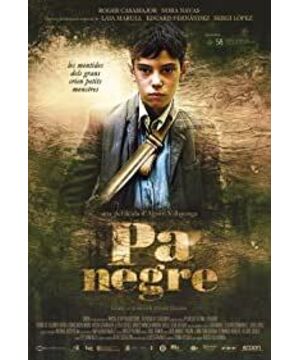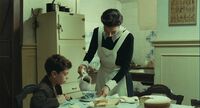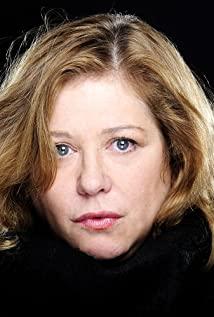was a civil war in the Second Republic of Spain
. Right-wing groups such as the Spanish National Army and the Falange
Anti-Fascist Popular Front and the Republican government had the aid of the Soviet Union and Mexico, while Franco's National Army had the support of Nazi Germany, the Kingdom of Italy and Portugal, as Spanish ideological conflict and The proxy war between the Axis group and the communist forces made the Spanish Civil War considered a prelude to the Second World War. The main reason for the outbreak of the Spanish Civil War
, which began on September 1, 1939, was the various social contradictions in Spain at that time. The left and right wing attacked each other, the failure of government reforms, and the dissatisfaction of the old forces of soldiers and religious figures. In the long run, the confrontation turned to armed struggle.
The civil war was triggered by the planning of the right-wing soldiers.
The Spanish Civil War is also famous for the brutal killing of prisoners of war by both sides, and civilians other than soldiers often kill each other because of their different religious beliefs. In April 1939, the Spanish National Army won the victory, the Second Spanish Republic disintegrated, all the right-wing organizations merged, and Francisco Franco implemented the dictatorship, entering the period of Franco's rule, and the restoration of the Bourbon Dynasty (the throne was vacant), Franco served as regent until his death.
Francisco Franco died on November 20, 1975. After the
war, Franco brutally suppressed the republicans. Nearly 100,000 people were massacred, and millions of people suffered lifelong discrimination. This is not to say that the Republicans will be soft-hearted if they win. In dealing with internal differences, the republicans still fought brutally and attacked ruthlessly, and it goes without saying how ruthless they are towards the enemy.
The black bread, which symbolizes the ugly truth, is like black nourishment. In addition to spawning villains with distorted personalities and tendencies, it can also create elites who become more courageous and learn from the past: the cannibalism of the left-wing camp has made George Orwell painful. In 1938, he published the classic document "Salute to Catalonia" of the Spanish Civil War. In 1946, he went to the desolate Jura Island and wrote the masterpiece "1984" which ended the myth of utopia in the midst of the miserable wind and rain; The Western New Left, standing on the shoulders of the International Column, Orwell and Sartre, is more radical, and actively promotes the international community to prevent humanitarian disasters. The Kosovo War, UN Resolution 1793, and the air strike on Libya can all see the New Left's tough stance on the United Nations and the United Nations. NATO influence.
The so-called extremes will reverse, the situation is so bad that it cannot be worse, and it can only be improved step by step. Without the blood and gold of German and Italian fascists, Franco's rebels could not have won the civil war. Unexpectedly, at the outbreak of World War II, Franco crossed the river and demolished the bridge. He had a close relationship with the fascist camp economically and militarily. He was so angry that the Nazi German Foreign Minister Ribbentrop scolded Franco: "This ungrateful coward! We got it from us, and now we are unwilling to cooperate with us."
In 2008, the British "The Times" broke the news that Churchill had paid millions of dollars in bribes to Franco's generals to persuade Franco to remain neutral. Maybe. Perhaps, it was the bloody black bread of the Civil War that prompted Franco to wisely choose to watch the fire from the other side. The devastated Spain can't afford to hurt. (Xinmin Weekly)
Flamenco art
in Gypsy, Antalusia, Arab and Spanish Jewish folk songs and dances
In 1425, the Gypsies came to Andalusia from India, and they also brought songs and dances with a strong Indian style. At that time, Andalusia was still under the rule of the Arabs, and there were still Jews and Moors. Soon, the Gypsies, who were heretics, were persecuted by the Catholic Inquisition. The Moors were also forced to convert to Catholicism or be expelled from Spain, the Jews suffered a similar fate, and the Gypsies had the most horrific experience: the ruling authorities tried to genocide the entire Gypsies and passed many legal restrictions Gypsies in action. Gypsy clothing and language are banned. Authorities banned gypsies from wandering and asked them to find regular jobs, but they were not allowed to engage in traditional gypsy livelihoods such as selling horses, setting up market stalls and witchcraft. Various legal constraints and restrictions have made some Gypsies, Moors and Jews have to hide in the rugged mountains to live in order to escape the authorities. After many years, different cultures merged and grew here, forming what we see today as flamenco.
In flamenco performances, we often see singers frowning tightly, with melancholy, resentful, and hoarse voices on their faces, which are rarely seen in other performances. People feel strange, but if they understand the production of flamenco The background is not difficult to understand. Flamenco art reflects the poor, tragic fate and situation of the Gypsies and expresses it through poetry, music and dance.
After the unification of Spain in the 15th century, the monarchs and the Catholic Church forced Jews and Arabs to convert and forced Gypsies to change their way of life. In order to escape persecution, they were forced to run away from their homes, displaced their homes, and fled to remote mountainous areas. They lived the same miserable life. , It was the gypsies who used their voices, dance steps, and musical instruments to tell all this.
In the 18th century, people's attitude towards gypsies changed greatly, so many gypsies walked out of the mountains and returned to the old villages and towns. Here comes the mysterious, sad and bold flamenco.
View more about Black Bread reviews










